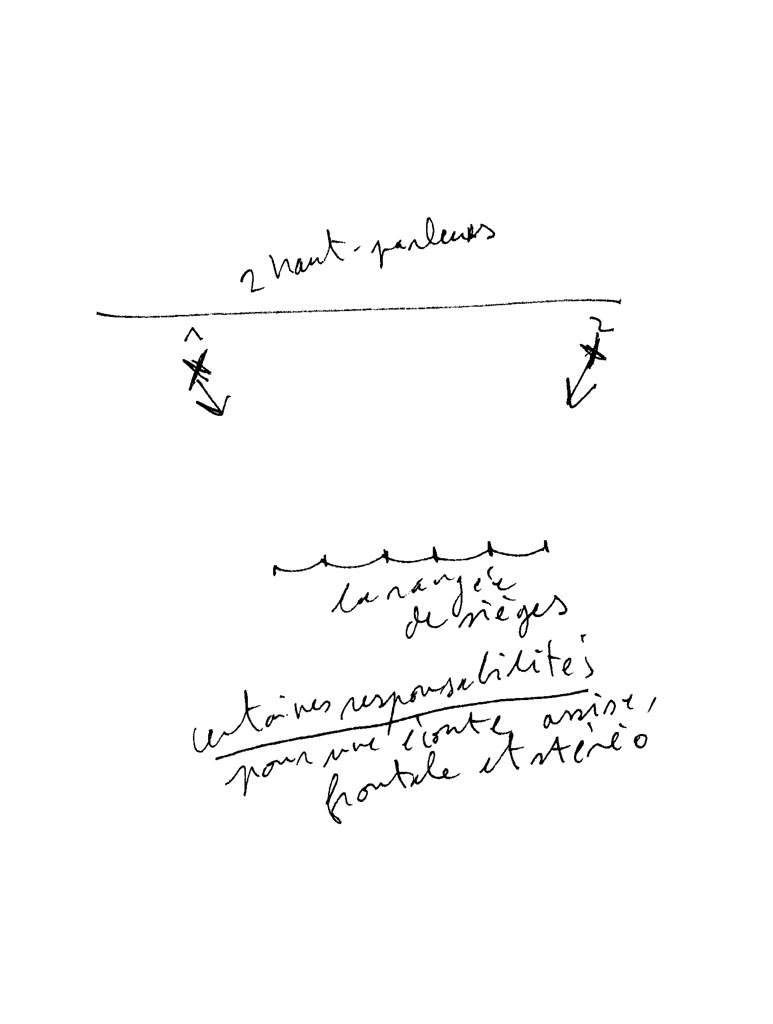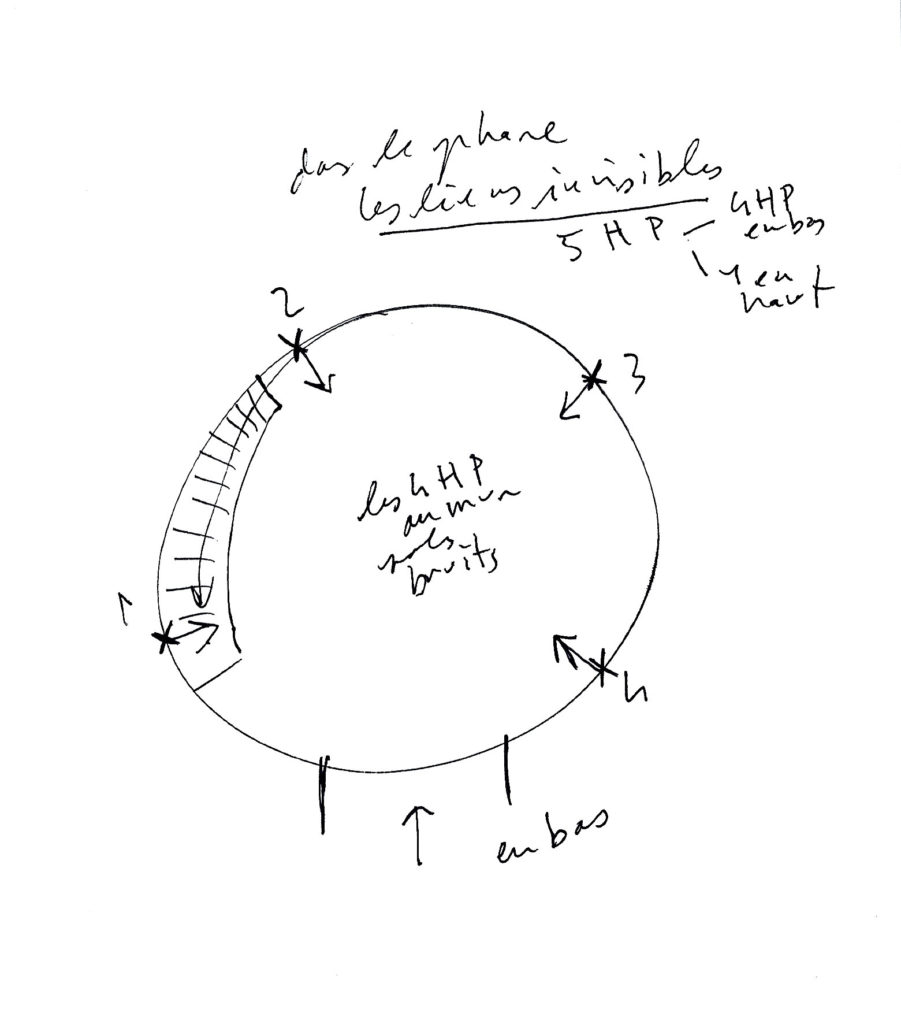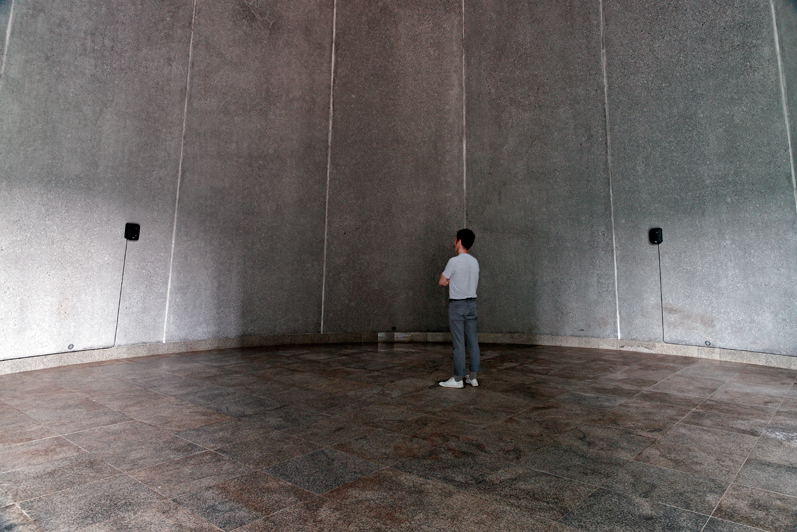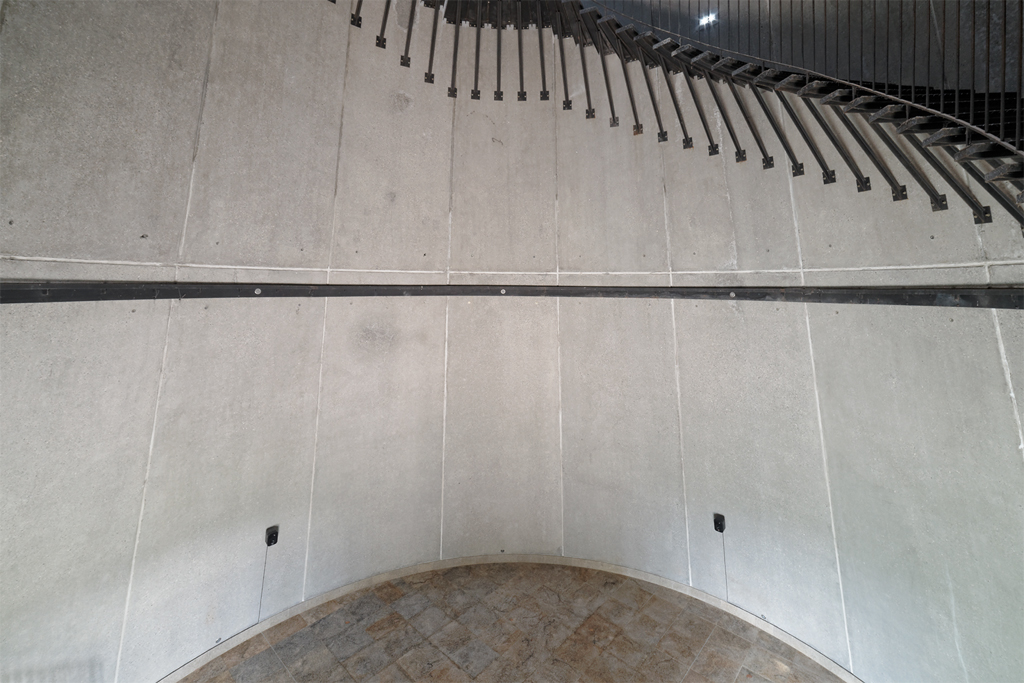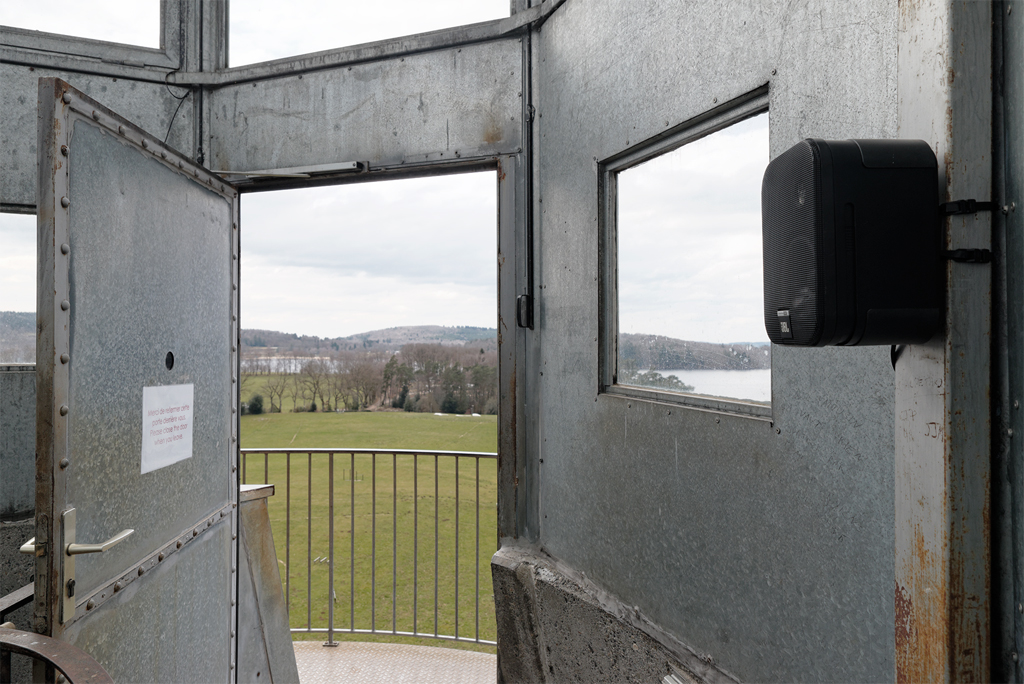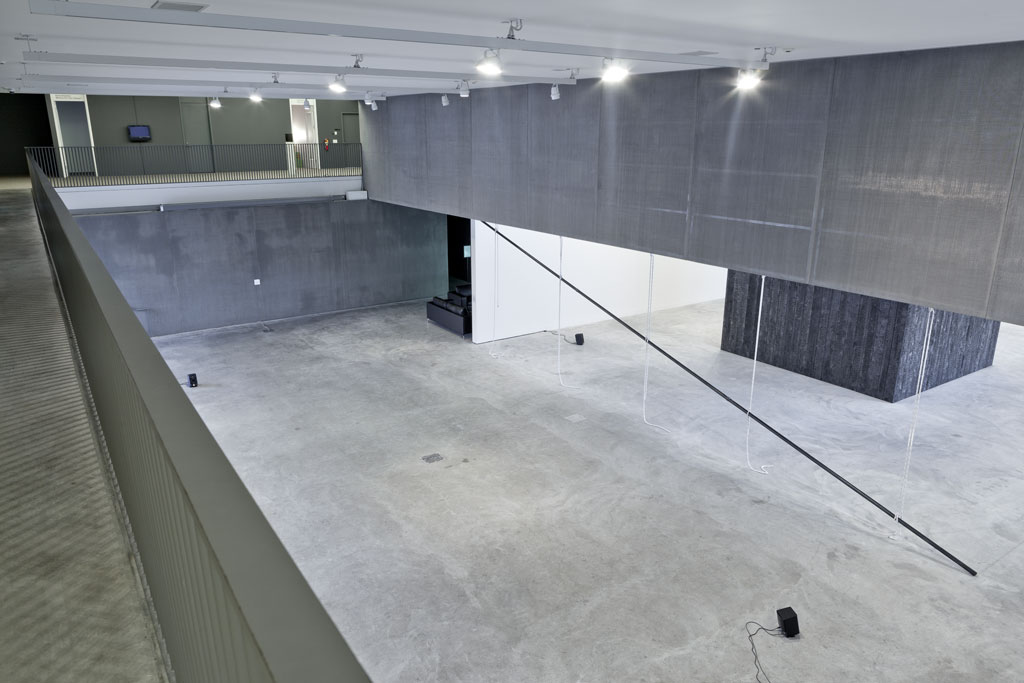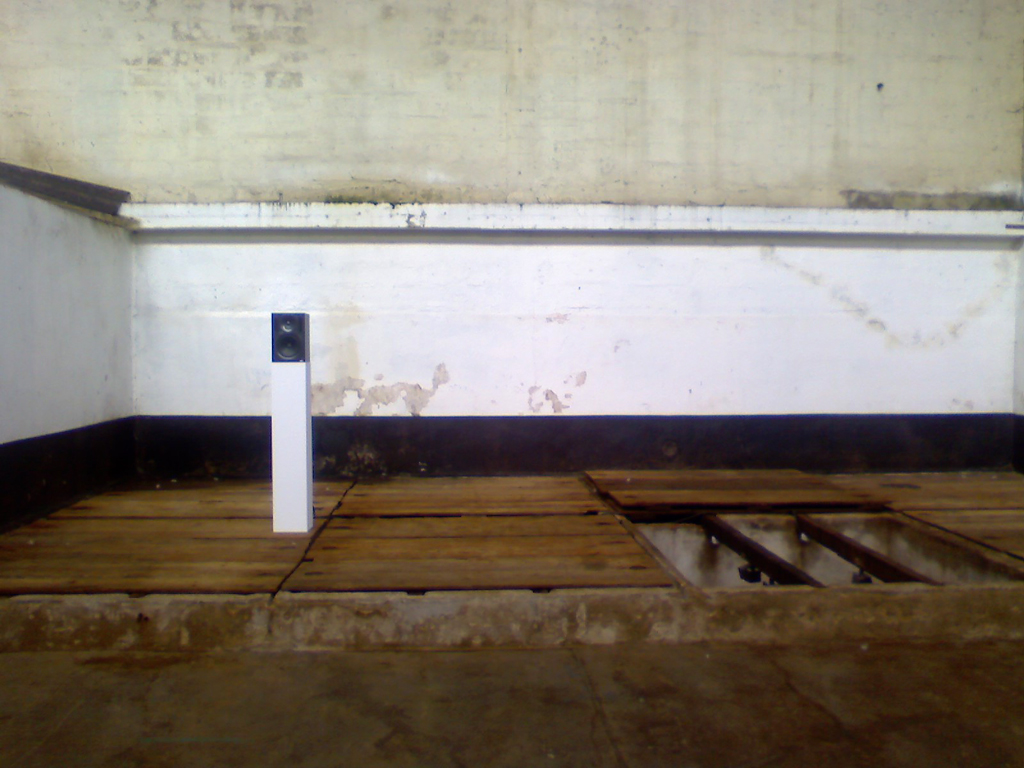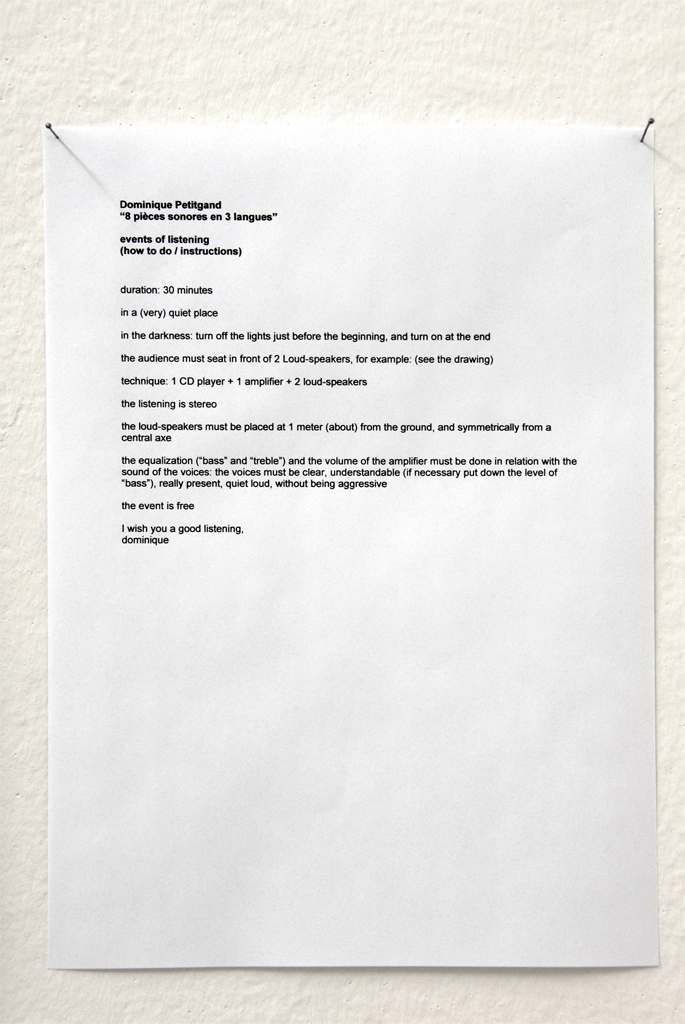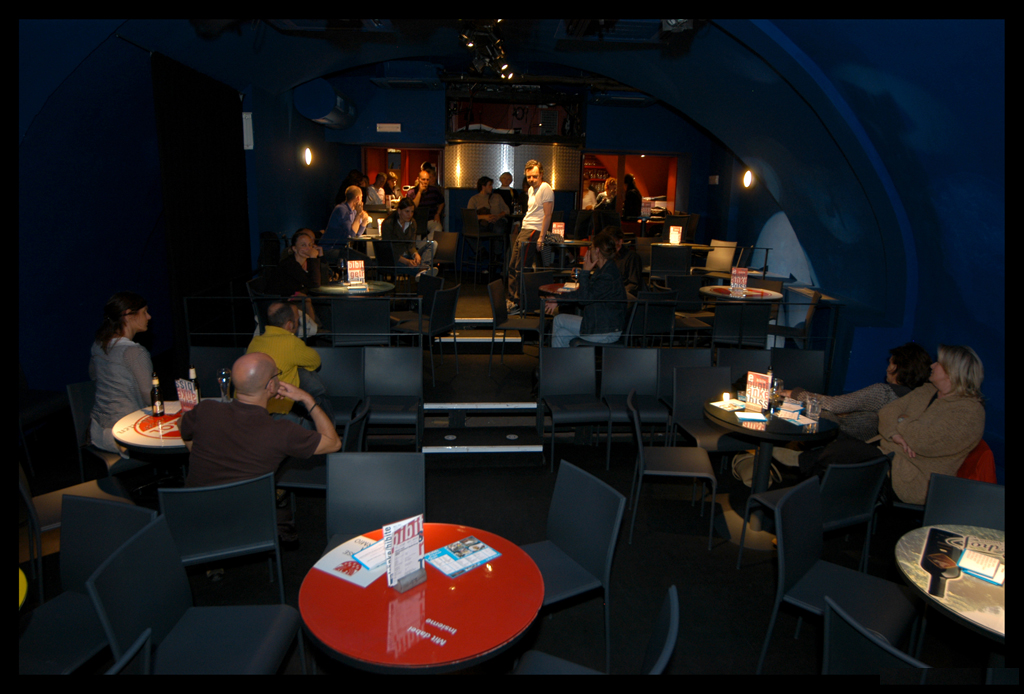Il y a, ensuite
sound installation with 4 speakers
1994
exhibition Activity of Matter, gb agency, Paris, 2019
exhibition Sans réserve, collection MAC/VAL, Vitry-sur-Seine, 2018
exhibition Là, ABA, Salle du chevet, Paris, 2017 (cur. Michel Brière)
solo exhibition Il y a les nuages qui avancent, CIAP, Île-de-Vassivière, 2015
exhibition Itinéraire Bis, MAC/VAL, Vitry-sur-Seine, 2011
exhibition Être présent au monde, collection MAC/VAL, Vitry-sur-Seine, 2007
exhibition Exposing Cinema, Blaak 10 Gallery, Film Festival of Rotterdam, 2006 (cur. Edwin Carels)
exhibition Raconte moi/Tell me, Musée National des Beaux-Arts de Québec, 2005 (cur. Marie Fraser)
exhibition Mobiles Urbains, abbaye de Maubuisson, Saint-Ouen-l’Aumône, 2003
exhibition Les heures claires, Villa Savoye, Poissy, 2002 (cur. Frank Lamy)
exhibition Ouverture : 0.4, Château du Bionnay, Lacenas, 1999 (cur. Olivier Reneau)
Il y a, ensuite (There is, then) – version with 2 speakers and English subtitles
exhibition Raconte-moi/Tell me, Casino, Luxemburg, 2006 (cur. Marie Fraser)
Les heures creuses

Il y a, ensuite is an installation with four speakers, two voices and a music.
In this version, the two voices and the music can be heard in the three levels of the gallery and dialog at a distance from a point to another.
The music played on two speakers fixed to the bottom of the walls in the middle of the other works (one in the lower space and one in the upper space) frame the two voices played on two speakers fixed at ear height (one in the entrance as reception, the other in the lower intermediate space).
The repetitive and linear music, perceived far or near (depending on our position in the gallery), initiates the narration and accompanies the rhythm and the scansion of the voices that respond each other at a distance: a child, on one hand, central voice that describes a landscape to be reconstructed fragment by fragment (panorama, details near or far), a composite possible landscape, half real half invented, and a woman, on the other hand, secondary voice that questions and rekindles the narrative.
visual – excerpt of the transcription
excerpt 1
extrait
hiuhuu
hiuhuu



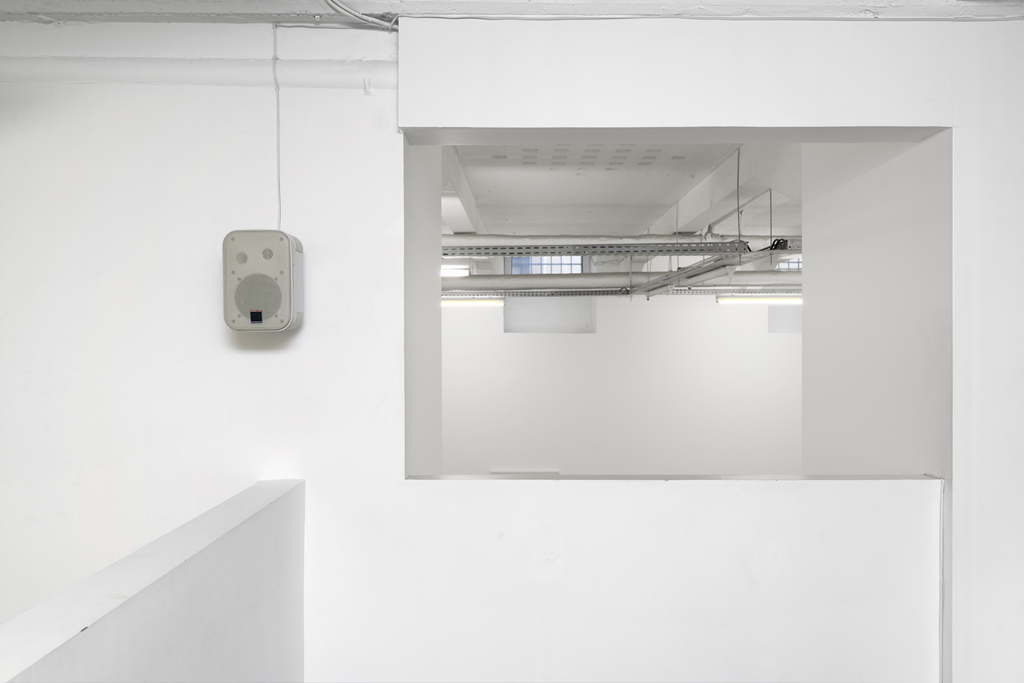

gb agency, Paris, 2019 – photos Aurélien Mole
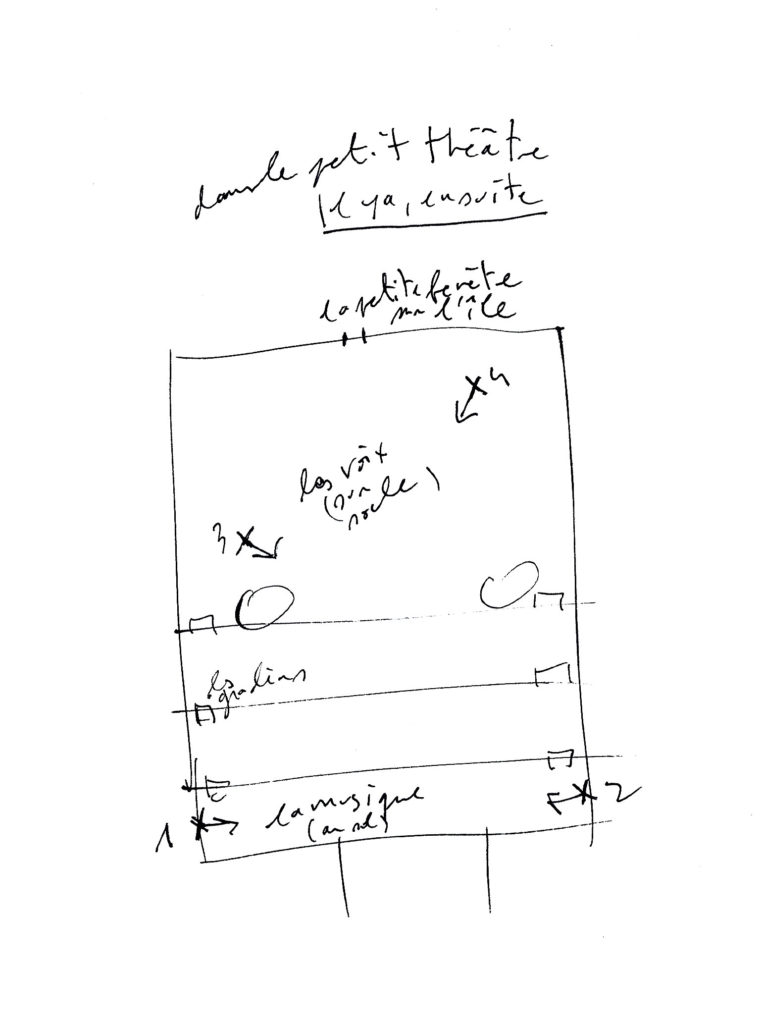
In the exhibition in Île de Vassivière, the installation took place in a little theatre (frontal space with small bleacher).
in the first part of the space and at the top of the bleacher, two speakers on the ground emit the music. Further, on what can be called the stage, two speakers on a pedestal amit the two voices at a distance from each other.
The possible landscape evoked by the voice of the child finds resonances with the real landscape of the island. This landscape from which we can see a fragment through the small window on the back wall, a framed view of the nature and the lake.
extrait







CIAP, Île-de-Vassivière, 2015 – photos Aurélien Mole
hhh

The installation called Il y a, ensuite takes up at least two spaces. One space for the music underlayer and nearby, one space for the two voices.
In this version, a partition draws a first space, an airlock, a first landing on which two speakers, mounted half way up on a spedestal, symmetrically emit the music. Beyond, in a larger and more open space, from which the underlayer music can still be heard, two speakers at a distance and mounted on a pedestal emit the two voices. The two loudspeakers for the voices do not face each other: the second one is oriented towards the first which is oriented towards the distance.
extrait
extrait


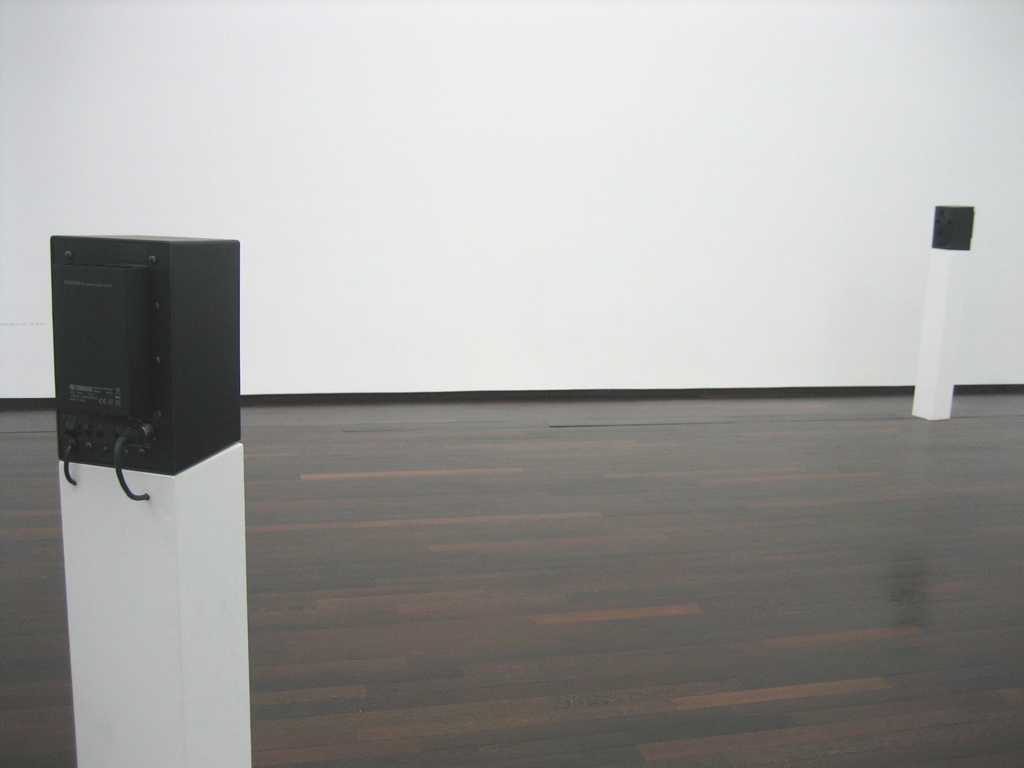
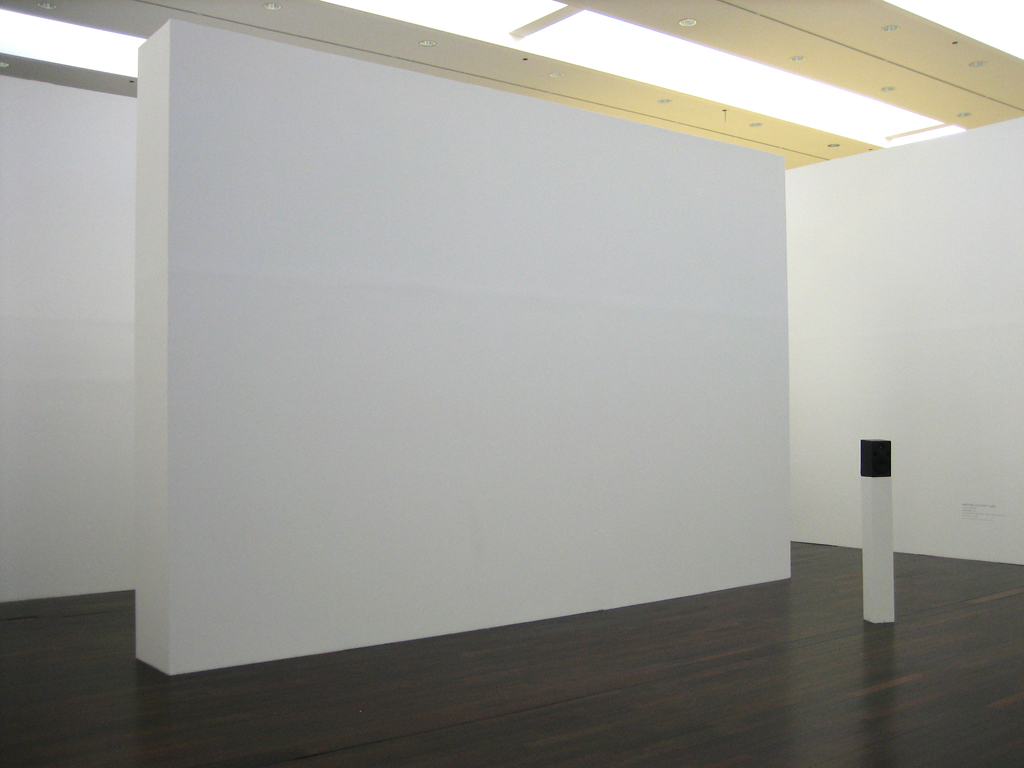


MAC/VAL, Vitry-sur-Seine, 2007 – photos D.P.
ffff

In this version of the installation called Il y a, ensuite, which takes place in a symmetrical twin staircase, the music takes up the first landing and the voices the second one. The two speakers for the music are symmetrically mounted on the window sill. For the two voices, upstairs, two speakers are set high up on either sides of the major dividing line and they are slightly steeping towards the staircases. The visitor, who can decide to use the left or right staircase to walk up, first hears either the child’s voice or the woman’s. On the second landing, the two voices, equidistant between the two speakers, merge together while the underlayer music from the lower floor can still be heard.
hiuhuu



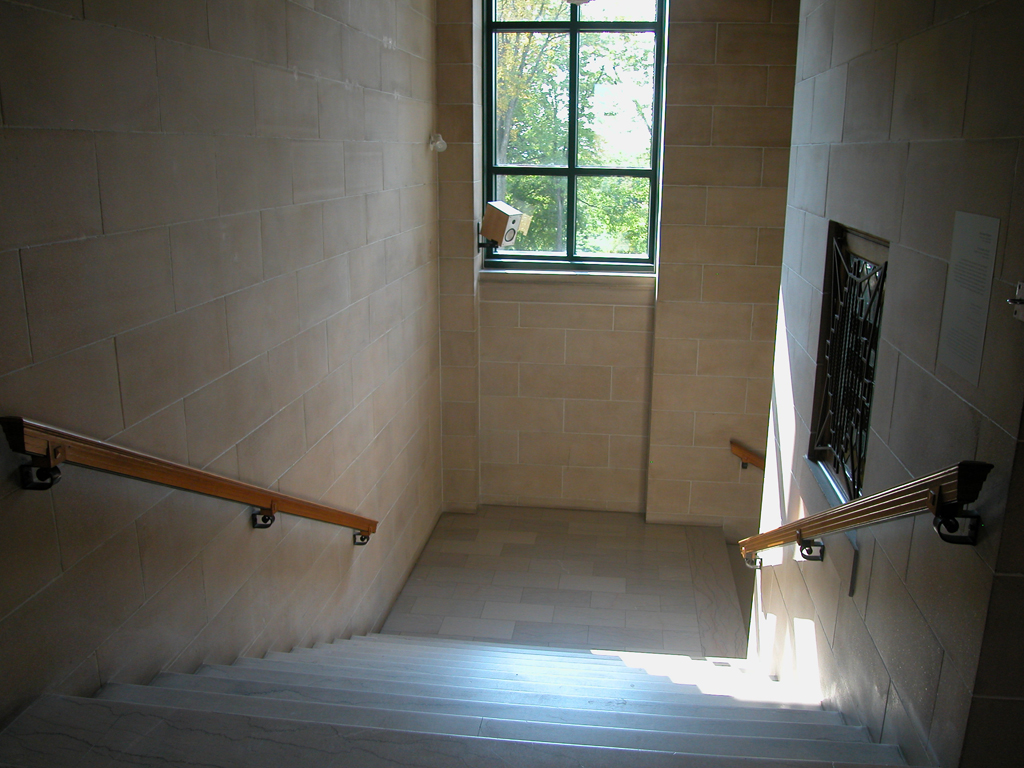
Musée National des Beaux-Arts de Québec, 2005 – photos D.P.
gggg

version with 2 haut-speakers and subtitles
Il y a, ensuite (There is, then).
Version for voices only from which the musical underlayer is substracted: the street down below and the traffic give rise to a rumor which can be heard inside the exhibition and takes up the space devoted to music. The great length of the glass roof enables the two voices from two distant areas to be emitted.
In this version with subtitles, the voices stays the same (in French). On one side, a video screen fixed on the wall shows the written and synchronous translation.
English translation by Chet Wiener.
excerpt 2 with two voices only
ggggg
ggggg
ggggg




Casino, Luxemburg, 2006 – photos Christian Mosar
rrr
about
– text by Anne-Sophie Miclo, press article La belle revue, June 2015, Fr./En.
– text by Alexia Fabre, catalogue of the exhibition Être présent au monde, MAC/VAL, 2007, Fr./En.
– text by Marie Fraser, catalogue of the exhibition Tell me, MNBA Québec/Casino Luxembourg, 2005, Fr./En.
gggg











